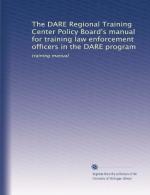|
This section contains 1,936 words (approx. 7 pages at 300 words per page) |

|
The term alcohol-drug interaction refers to the possibility that alcohol may alter the intensity of the pharmacological effect of a drug, so that the overall actions of the combination of alcohol plus drug are additive, potentiated, or antagonistic. Such interactions can be divided into two broad categories—PHARMACOKINETIC and PHAR-MACODYNAMIC. Pharmacokinetics are concerned with the extent and rate of absorption of the drugs, their distribution within the body, binding to tissues, biotransformation (metabolism), and excretion. Pharmacokinetic interactions refer to the ability of alcohol to alter the plasma and tissue concentration of the drug and/or the drug metabolites, such that the effective concentration of the drug at its target site of action is significantly decreased or increased. Pharmacodynamics are concerned with the biochemical and physiological effects of drugs and their mechanisms of action. Pharmacodynamic interactions refer to the combined actions of alcohol...
|
This section contains 1,936 words (approx. 7 pages at 300 words per page) |

|


